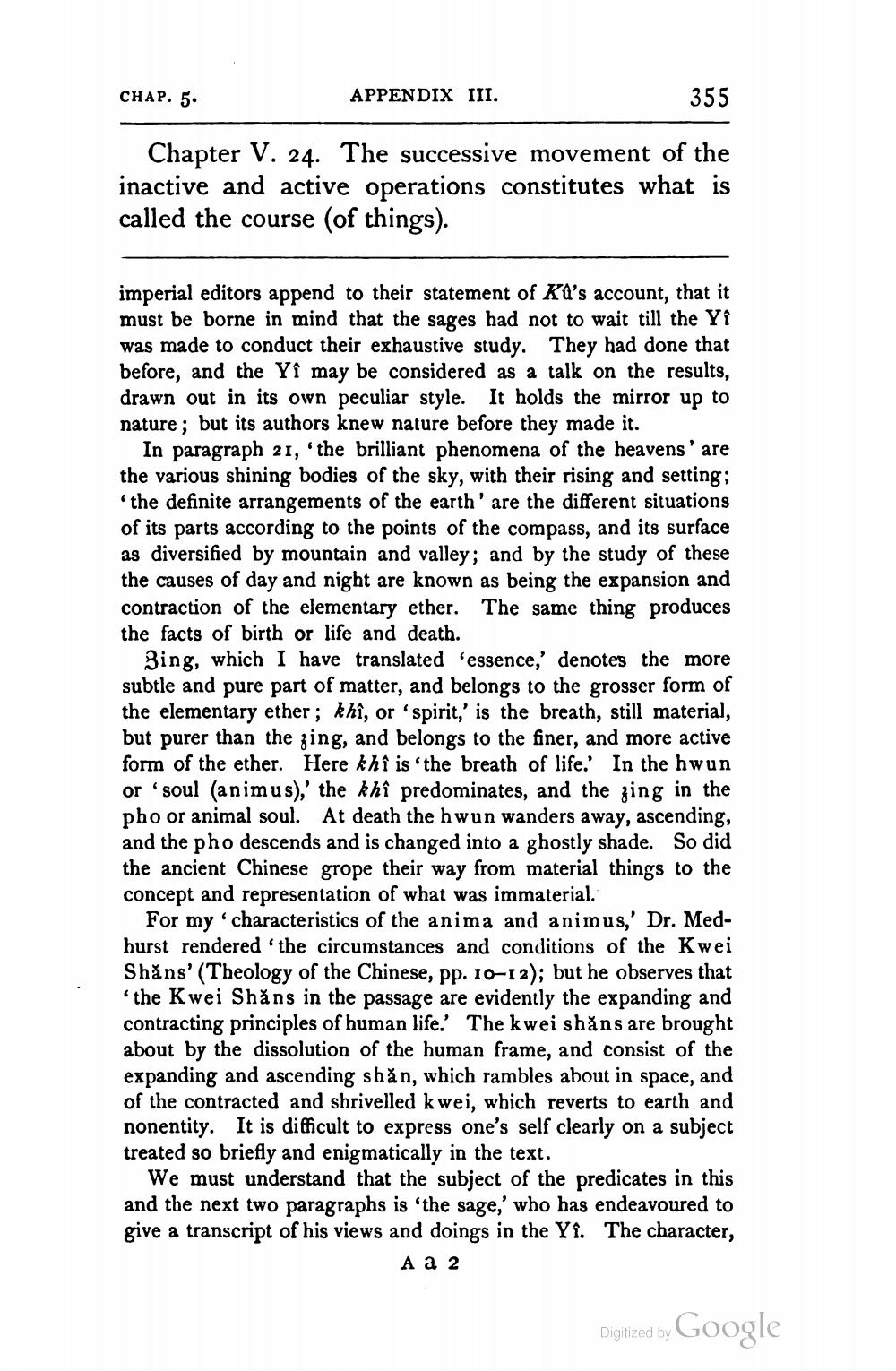________________
CHAP. 5.
APPENDIX III.
355
Chapter V. 24. The successive movement of the inactive and active operations constitutes what is called the course (of things).
imperial editors append to their statement of Ka's account, that it must be borne in mind that the sages had not to wait till the Yi was made to conduct their exhaustive study. They had done that before, and the Yi may be considered as a talk on the results, drawn out in its own peculiar style. It holds the mirror up to nature; but its authors knew nature before they made it.
In paragraph 21, the brilliant phenomena of the heavens' are the various shining bodies of the sky, with their rising and setting;
the definite arrangements of the earth' are the different situations of its parts according to the points of the compass, and its surface as diversified by mountain and valley; and by the study of these the causes of day and night are known as being the expansion and contraction of the elementary ether. The same thing produces the facts of birth or life and death.
Zing, which I have translated 'essence,' denotes the more subtle and pure part of matter, and belongs to the grosser form of the elementary ether; khî, or "spirit,' is the breath, still material, but purer than the zing, and belongs to the finer, and more active form of the ether. Here khî is the breath of life.' In the hwun or soul (animus),' the khî predominates, and the zing in the pho or animal soul. At death the hwun wanders away, ascending, and the pho descends and is changed into a ghostly shade. So did the ancient Chinese grope their way from material things to the concept and representation of what was immaterial.
For my characteristics of the anima and animus,' Dr. Medhurst rendered the circumstances and conditions of the Kwei Shăns' (Theology of the Chinese, pp. 10-12); but he observes that 'the Kwei Shåns in the passage are evidently the expanding and contracting principles of human life.' The kwei shăns are brought about by the dissolution of the human frame, and consist of the expanding and ascending shăn, which rambles about in space, and of the contracted and shrivelled kwei, which reverts to earth and nonentity. It is difficult to express one's self clearly on a subject treated so briefly and enigmatically in the text.
We must understand that the subject of the predicates in this and the next two paragraphs is 'the sage,' who has endeavoured to give a transcript of his views and doings in the Yi. The character,
Аа2
Digitized by Google




